" Later this month at the Tokyo Motor Show Subaru will reveal its Hybrid Tourer Concept. It will feature key elements of the company’s ‘DNA’, notably a horizontally-opposed engine – in this instance the world’s first ‘boxer’ hybrid powerplant – and "

Nils Concept
NILS, is a single-seat electric concept vehicle that offered a glimpse of a new form of minimalist mobility which was unveiled at the Frankfurt Motor Show this year.
The concept features an aluminium space frame, wing doors and free-standing wheels – is seeking to maintain the dynamic performance of a sports car while travelling silently and with zero emissions.
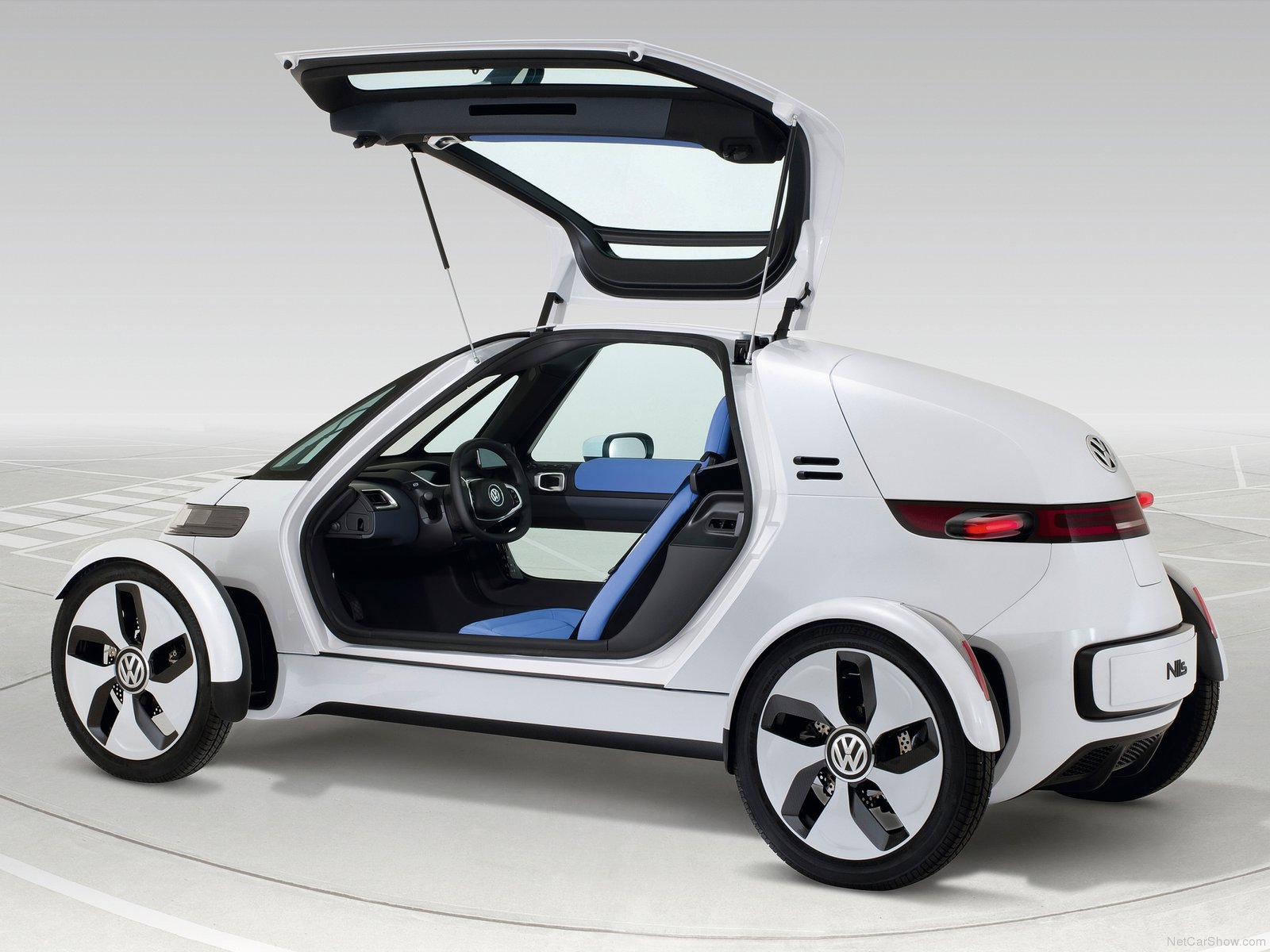
The NILS project is supported by the German Federal Ministry of Transport, Building and Urban Development, and is designed to be both technically realistic and economically supportable.
With an electric charge range of about 40 miles and a top speed of around 80 mph, NILS, would, theoretically, be the perfect commuter vehicle for the vaste majority of the German population.
According to the German Bureau of Statistics, 73.9 per cent of all commuters residing between Berlin and Munich cover less than 25 kilometres (15.5 miles) on their way to work. So, the theory goes, most of us could jump in our NILS to get to work silently and quickly, then plug it in all day, before shooting home in the futuristic manner in which you got there. And still have enough charge for a diversion to the gym, club or sausage shop.
But you couldn’t drop/pick up the kids could you? Well, the thinking goes, it doesn’t actually matter too much.
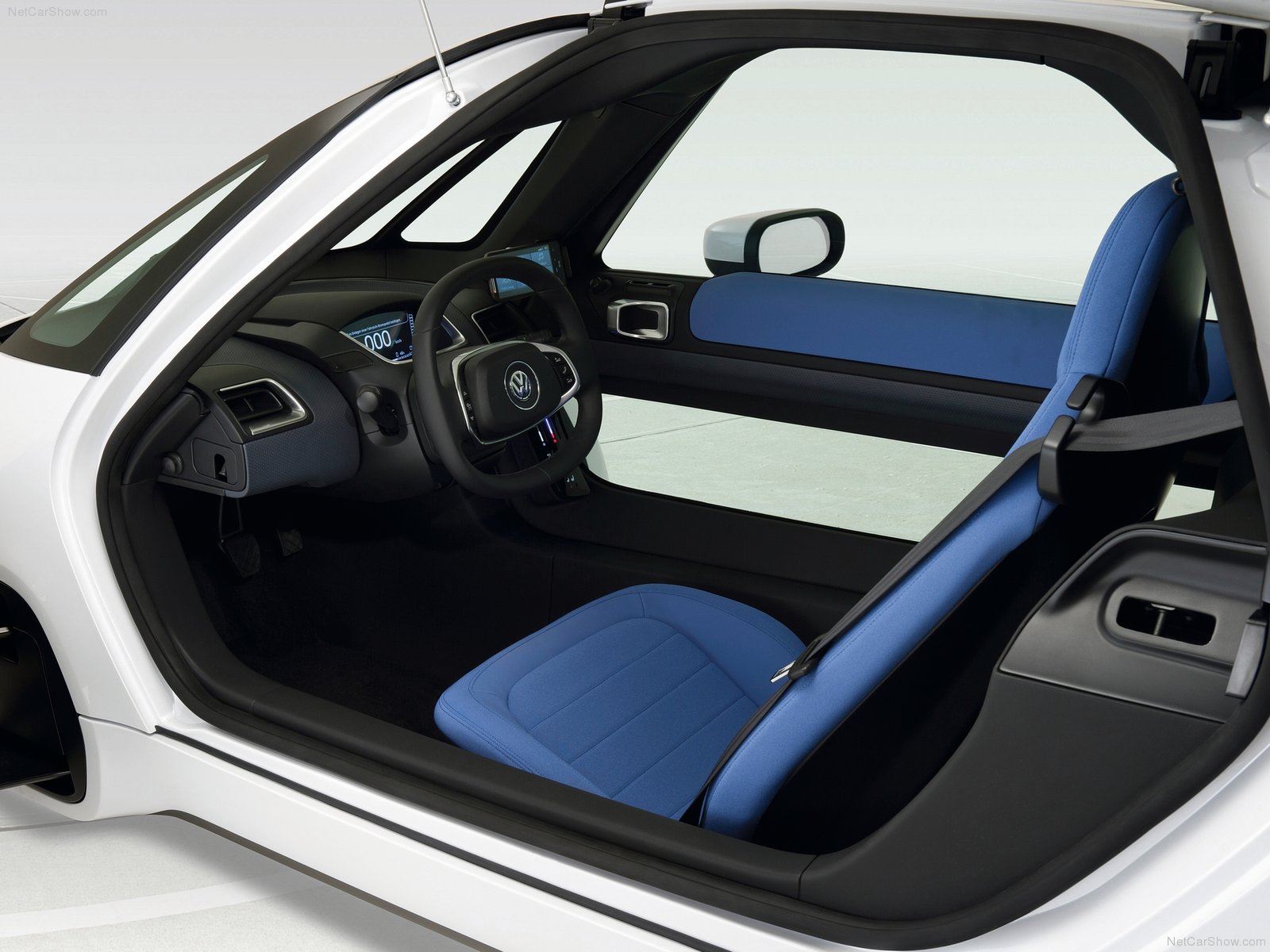
According to VW about 60 per cent of all commuters travel by car – and of these over 90 per cent travel alone. Zero-emissions vehicles like NILS, so goes the argument, will offer these frequent drivers a new eco-friendly way of getting round.
NILS requires extremely little space in traffic. It is only 3.04 metres long – making it about 50 cm shorter than the new Volkswagen up! – just 0.39 metres wide from wheel to wheel, and a mere 1.2 metres tall.
Ironically, the concept has the same basic layout as a Formula 1 race car, with the driver in the middle, the engine in back, and free-standing outboard wheels. The 17-inch alloys are equipped tyres optimised for low rolling resistance too. These aren’t exactly slicks, however.
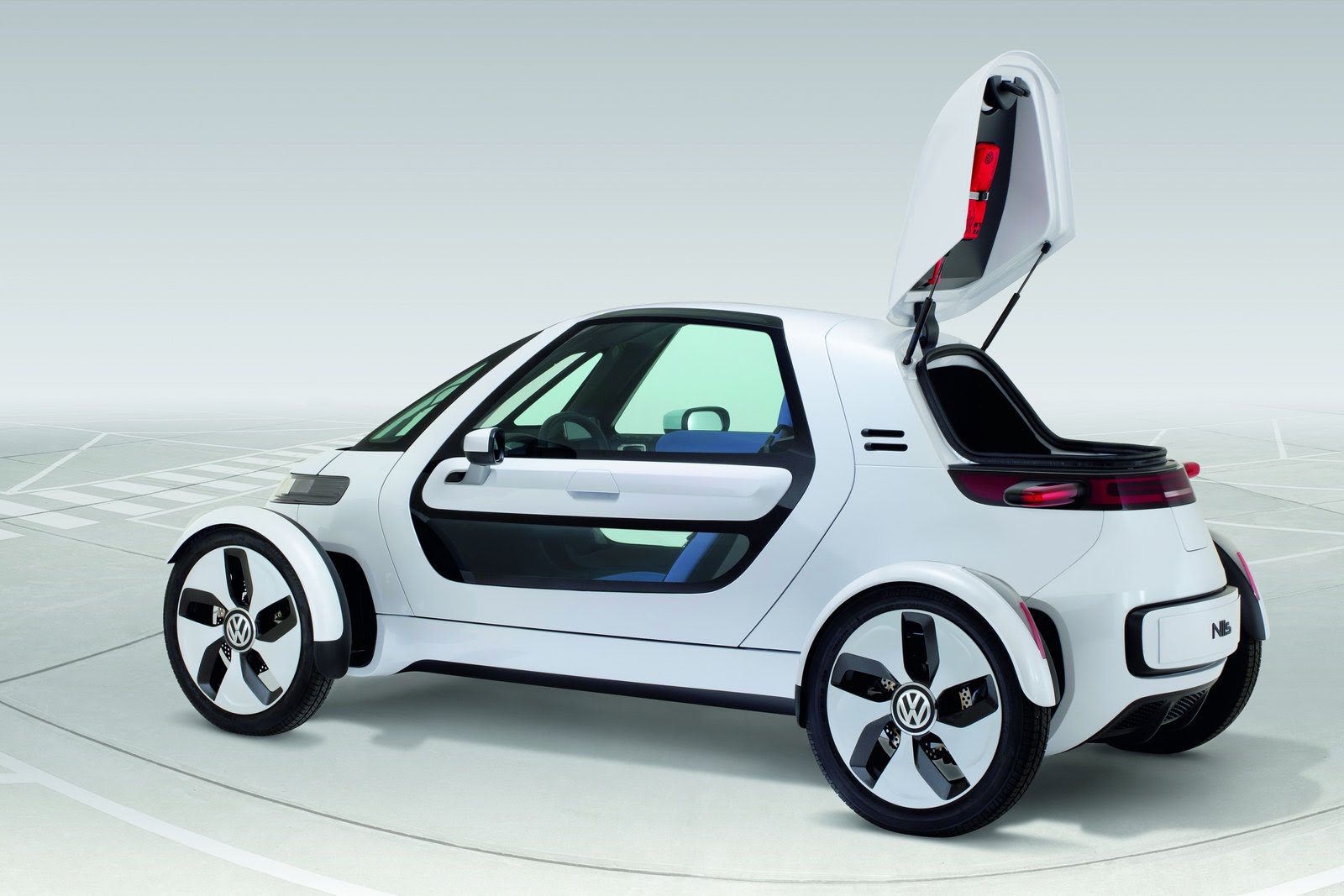
It wouldn’t be stretching the imagination to greatly to suppose that Sebastian Vettel’s relentless success might have been the inspiration for the design. It was penned at Volkswagen’s Design Centre in Potsdam, Berlin. According to Designer Thomas Ingenlath, the centre’s director, the inclusion of the Gull wing doors was not only a reference to a supercar history. “[The Gull Wing doors] allowed us to create large transparent surfaces and simultaneously to make entering and exiting the vehicle very comfortable, even in the most cramped of parking spaces.”
With it’s compact design and it’s svelte kerb weight of 460 kg, it would probably be a lot of fun to drive. VW claim a pull-away time of 11 seconds. Not exactly Countach-like, but pretty swift and perky. The steering is purely mechanical , while the electric motor produces its maximum torque of 130 Nm from standstill, via a single speed transmission. Suspension is by double wishbones front and rear; while ESP (Electronic Stabilisation Programme) helps to tame any over-exuberance on the part of the driver. This is like a cross between a fixed gear bike and a go-kart in its handling characteristics.
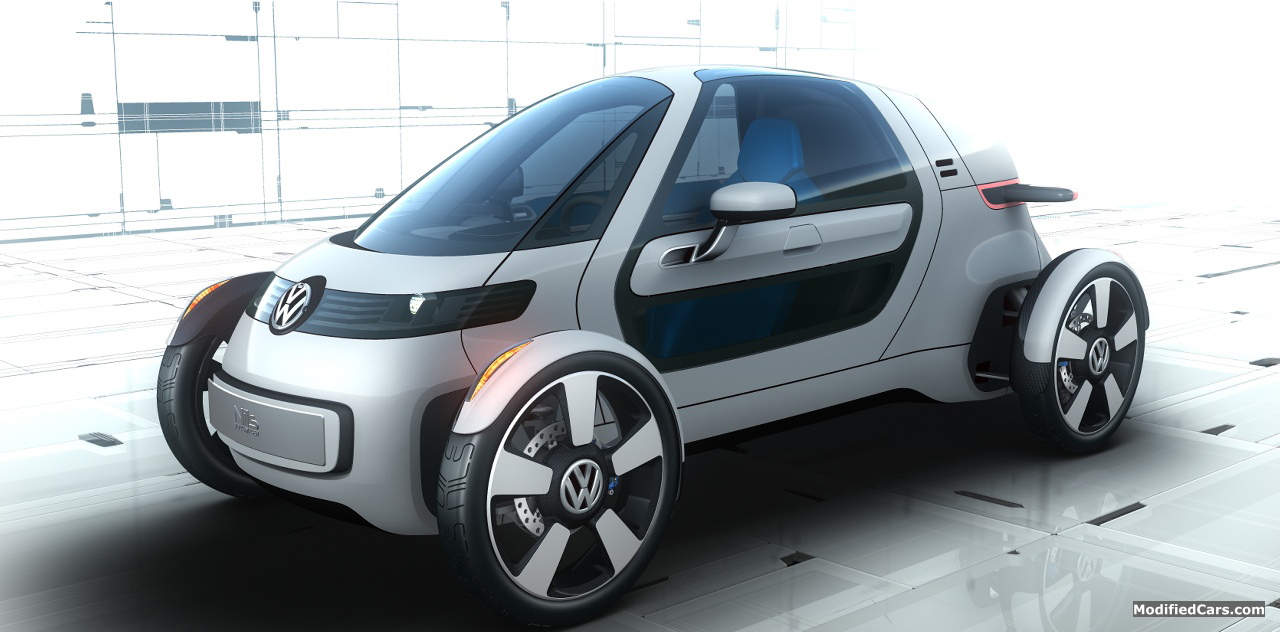
The electric motor in the NILS has a relatively small 15 kW nominal power output which can spike to a short-term peak power of 25 kW. A lithium-ion battery supplies the electric motor with energy, and as it can be relatively small because of the vehicles dimensions, it is relatively inexpensive and can be charged from a conventional outlet in a little over two hours (much better than the epic eight hour charges of most of the current production Electric cars.
The centrepiece of the electric drive system an electric motor that weighs just 19KG. The energy is managed by a high-voltage pulse inverter, which – together with the 12-Volt DC/DC converter for the vehicle electrical system and the charger – forms an integral drive unit. All drive unit components are located compactly in an aluminium housing at the rear of the vehicle – and apparently there’s still some room for the briefcase.
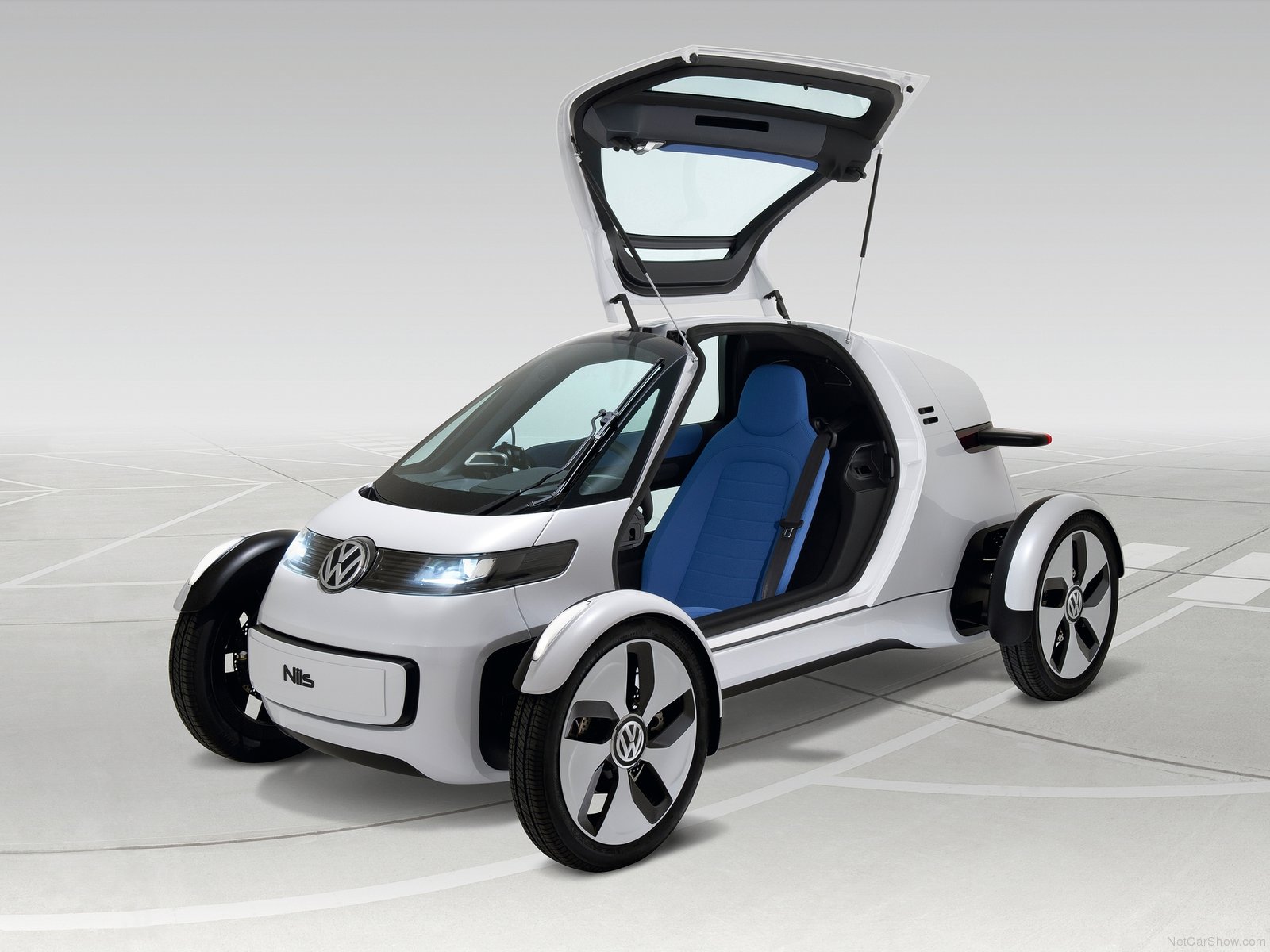
The body-coloured area above the rear lighting module swings upward, revealing space suitable for items such as a case of drinks and a bag.
VW have always been at the cutting edge of visions of future motoring. And while the Japanese have been matching German innovations step by step – the combination of fun, flexibility and a quick electric charge may well be a viable vision of a future dominated by wishful thinking.
And the thing is, it still looks like a VW. All they have to do now is have the balls to actually produce it en-masse.
CLICK TO ENLARGE










The question is no longer whether a NILS-type concept is a good idea, but how cheaply it can be produced and still retain the concept’s essence. People won’t pay 5-series money for a single seater, but they will pay MX-5 money because that’s about the sweet spot for the target demographic.
until they sell these for the price of a four wheeler 5 to 10000 why would anyone want this turd